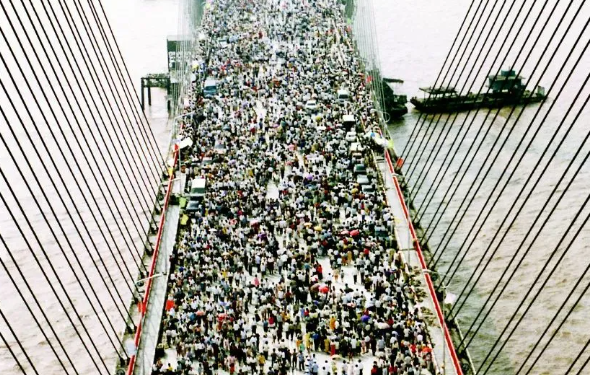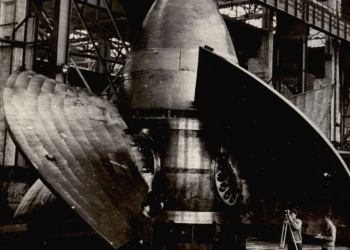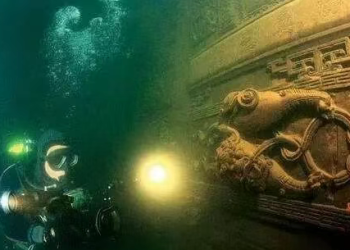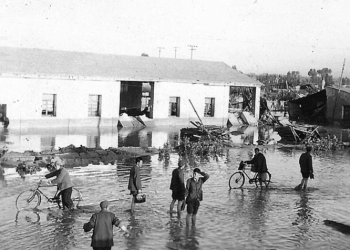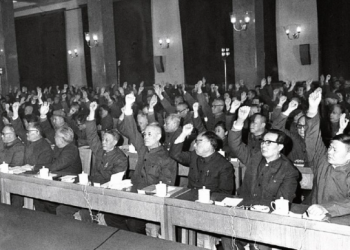After the completion of the Wuhan Yangtze River Bridge, what was once an insurmountable natural barrier became a thoroughfare connecting the north and south. However, following China’s reform and opening up in 1978, the single bridge could no longer meet the growing demands of production and daily life. As early as the early 1980s, plans were already underway to build a second bridge. On December 27, 1984, the Wuhan Evening News published an exciting announcement: Wuhan would construct a second Yangtze River Bridge.
In May 1991, construction officially began on the Second Yangtze River Bridge.
Initiated in 1991, the Second Yangtze River Bridge featured a main span of 400 meters and set numerous national records in terms of construction metrics at the time. It also achieved several world firsts, with over 20 key technical indicators reaching the advanced international standards of the 1990s.
The bridge became the world’s first cable-stayed bridge with its main tower pier constructed in a deep-water zone, posing unprecedented construction challenges. The Yangtze River’s rapid currents and the complex terrain on both banks required meticulous preliminary geological surveys. The area was found to have a gravel layer that was not only extremely hard but also fractured, further complicating construction. The massive deep-water foundation works—including the use of large steel cofferdams, record-breaking foundation drilling diameters, and unprecedented depths into the conglomerate rock layer—set new national benchmarks.
Each of the eight deep-water piers was equivalent in height to a 20-story building.

In 1995, as the Second Yangtze River Bridge officially opened to traffic, the entire city of Wuhan turned out in excitement.
Streets were nearly deserted as over a million residents flooded toward the bridge to witness the historical moment. Families gathered, friends reunited, and countless citizens took photographs to commemorate the occasion. Among those present was none other than renowned physicist and Nobel Laureate, Professor Yang Zhenning, who joined the jubilant crowd in celebrating this engineering marvel.
From the moment it opened, the Second Yangtze River Bridge became an iconic symbol of Wuhan.
More than just a feat of engineering, it redefined the city’s spatial identity and urban development. Together with the Wuhan Yangtze River Bridge—the city’s first bridge across the mighty river—it formed a complete 28-kilometer inner ring road system, fundamentally transforming transportation in the Jiangcheng (River City). No longer were the three towns of Wuhan—Wuchang, Hankou, and Hanyang—linked by a single traffic corridor. Now, a bus ride from Wuchang to Hankou could take as little as ten minutes.
With the Second Bridge, Wuhan’s main traffic arteries evolved into a dual-axis layout.
Urban mobility took on a new dimension—both literally and metaphorically—as the city embraced a more modern, interconnected form. The bridge itself wasn’t just a transport route; it was also a walkable pathway for pedestrians. Standing atop it offered panoramic views of Wuhan’s grandeur—on the left, the historic Wuhan Yangtze River Bridge; on the right, the sleek silhouette of the Erqi Yangtze River Bridge. Below, vehicles sped along the bridge lanes while steamers and cargo ships moved rhythmically along the waters of the Yangtze.

The Second Yangtze River Bridge holds a special place in Wuhan’s urban history.
It was the first Yangtze-spanning bridge constructed using municipal urban development funds, independently financed by the city of Wuhan itself. More than just a transportation link, it symbolized a growing city’s determination to forge its own path forward. This powerful bridge completed the city’s first ring-road network—an ambitious vision turned reality. It facilitated a new era in which elevated highways, ground-level roads, and interconnected districts coexisted, allowing for seamless movement between both banks of the Yangtze and across Wuhan’s historic tri-city layout.
The completion and official opening of the Second Yangtze River Bridge marked a pivotal moment: the birth of Wuhan’s inner ring.
It shortened distances, connected communities, and ushered in what would come to be known as the “Second Ring Center Era.” With this transformation, Wuhan not only redefined its own geography—it stepped confidently into a new chapter of urban evolution, becoming a city that truly bridged the past with the future.
